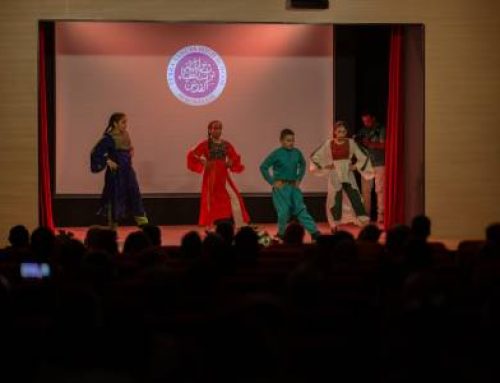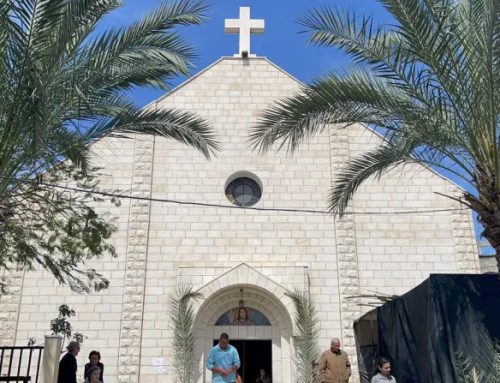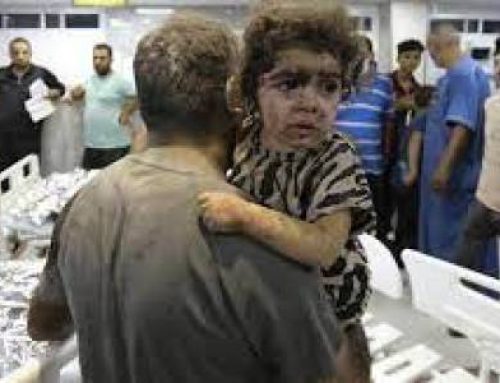Physicians for Human Rights (PHR) said it found two “disturbing patterns” — soldiers did not always fire in self defense and aimed, at times, at heads and thighs “to injure and kill, not to avoid loss of life and injury.”
WASHINGTON (Reuters) – A U.S.-based medical rights group published research on Friday saying the Israeli army violated international norms by using excessive force against Palestinian rioters.
At least 170 people have been killed in more than five weeks of clashes in the West Bank and Gaza Strip, more than 150 of them Palestinians or Israeli Arabs.
Physicians for Human Rights (PHR) said it found two ”disturbing patterns” — soldiers did not always fire in self defense and aimed, at times, at heads and thighs “to injure and kill, not to avoid loss of life and injury.”
PHR said it heard numerous independent eyewitness accounts and saw other reliable reports showing most of those shot with real ammunition or rubber or rubber-coated bullets were unarmed. Its team saw soldiers firing at civilians in Ramallah when they could see no sign of Palestinians using firearms.
“The numerous high velocity wounds to the thigh are highly unlikely to be random events, but rather suggest a policy on the part of the IDF that allows individual soldiers to shoot under very broad circumstances,” it added.
The Israeli army said in a statement that it has acted with restraint in clashes with Palestinians. It said those who had died had directly threatened Israeli troops or civilians.
“The IDF acts with precise fire against those shooting…if the Palestinians were not shooting at us there would be no need to fire at them in response,” the statement said.
Forensic pathologists Robert Kirschner of the University of Chicago, medical examiner Nizam Peerwani, and orthopedic surgeon James Cobey conducted the research from Oct. 20-27.
Their findings followed a report two days ago by London-based Amnesty International, which said Israel’s excessive use of force could constitute war crimes.
PHR said a response to throwing stones that resulted in permanent disability, as most of the gunshot wounds to the leg would, was a “gross violation of human rights.”
Its analysis of fatal gunshot wounds in Gaza showed about half of the injuries were to the head and half to the torso, the area Israeli soldiers are trained to aim for.
Numerous head and eye injuries from rubber-coated or rubber bullets showed “frequent misuse” of these weapons, it said.
Of 2,299 visits in the West Bank and East Jerusalem hospitals from Sept. 29-Oct.17, rubber bullets accounted for 40 percent of injuries and live ammunition, for 30 percent.
Child Casualties
PHR said 38 percent of 31 Palestinians killed in Gaza from Sept. 30 to Oct. 24 were under 18. Of the first 1,134 injuries in the West Bank and Gaza, two percent were under nine, 14 percent were under 15, and 17 percent were 16-18, it added.
PHR’s goal was to investigate allegations Israel had used excessive force and that Palestinian police failed to prevent armed Palestinians from shooting at soldiers when civilians were present and likely to be caught in crossfire.
It urged both sides to exercise restraint and called on the Palestinians to shield children from participation in, or presence at, violent protests.
PHR accused the Israel army of violating its own rules, United Nations Law Enforcement Principles and Geneva Conventions on murder, torture, cruel and degrading treatment and that civilian casualties must be minimized.
PHR also deplored violations of medical neutrality, citing Palestine Red Crescent Society data that 33 ambulances had been hit by gunfire and 17 destroyed, in 64 separate attacks.
The report cited instances of medical workers, some wearing identifying vests, being shot at while caring for the injured.
PHR says it aims to mobilize health professions and the general public to protect and promote human rights. It shared the 1997 Nobel Peace Prize for its role as a founding member of the International Campaign to Ban Land mines.





